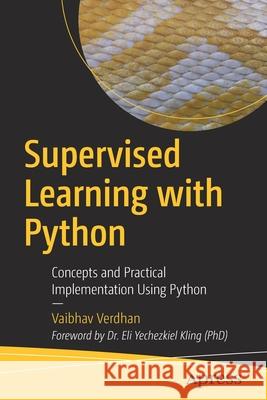Supervised Learning with Python: Concepts and Practical Implementation Using Python » książka
topmenu
Supervised Learning with Python: Concepts and Practical Implementation Using Python
ISBN-13: 9781484261552 / Angielski / Miękka / 2020 / 372 str.
Supervised Learning with Python: Concepts and Practical Implementation Using Python
ISBN-13: 9781484261552 / Angielski / Miękka / 2020 / 372 str.
cena 211,90 zł
(netto: 201,81 VAT: 5%)
Najniższa cena z 30 dni: 210,17 zł
(netto: 201,81 VAT: 5%)
Najniższa cena z 30 dni: 210,17 zł
Termin realizacji zamówienia:
ok. 16-18 dni roboczych
Bez gwarancji dostawy przed świętami
ok. 16-18 dni roboczych
Bez gwarancji dostawy przed świętami
Darmowa dostawa!
Kategorie:
Kategorie BISAC:
Wydawca:
Apress
Język:
Angielski
ISBN-13:
9781484261552
Rok wydania:
2020
Ilość stron:
372
Waga:
0.54 kg
Wymiary:
23.39 x 15.6 x 2.06
Oprawa:
Miękka
Wolumenów:
01
Dodatkowe informacje:
Wydanie ilustrowane











